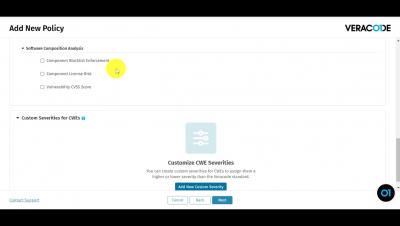Security | Threat Detection | Cyberattacks | DevSecOps | Compliance
Application Security
The latest News and Information on Application Security including monitoring, testing, and open source.
Keep infrastructure as code secure with Synopsys
Infrastructure as code is a key concept in DevOps for cloud deployments. Learn how to secure it using Rapid Scan SAST. It was not long ago when we needed to submit an IT support ticket to help launch infrastructure configurations (virtual machines, networks configurations, load balancers, databases, etc.) every time we needed to deploy a new application. It worked when we needed those less frequently, but it was not easily scalable.
Getting Application Security Back on the Rails
In its Interagency Report 7695, the National Institute of Standards and Technology (NIST) defined an application as “a system for collecting, saving, processing, and presenting data by means of a computer.” This broad term covers enterprise applications, consumer applications, and even phone apps. Security is important in all these types of applications, but the focus is not always the same. Let’s explore how below.
Developing Secure Web Applications: 6 Best Practices
When businesses think about maintaining cybersecurity, the first thing that comes to mind is often endpoint and network security. However, web application security is becoming increasingly important. There have been numerous high-profile attacks on web applications in recent years; in 2020, for instance, the Twitter accounts of famous people were compromised as part of a bitcoin scam.
SANS Survey Finds Only 29% of Orgs Have Automated Most of Their Security Testing
IT workloads are increasingly moving to the cloud, changing the way organizations develop and deliver software. Deploying and running production systems is now separate from the hardware and network, infrastructure is defined through code, and operations are now part of cloud service APIs.
Mapping the Attack Surface for Insurance Applications
As insurance organizations look to attract and engage customers, the growing use of web applications has increased their cyber exposure and the risks of cyberattacks. In this benchmark study, we analyzed the attack surface of the top 10 insurers in Europe to highlight the common attack vectors and security weaknesses that could be exploited – from page creation method to vulnerable components – and our top tips for reducing web application security risks.
Debunking the seven myths of FSI application security
Don’t let myths undermine the security of financial software. We examine the seven myths and misconceptions found in FSI application security. It’s obvious why cyber criminals are drawn to the financial services industry (FSI). It’s the Willie Sutton logic updated: he robbed banks because “that’s where the money is.” But today it’s not just banks.
Kondukto Secure Code Warrior Integration
Build developer trust with faster, accurate AppSec testing from Rapid Scan
Synopsys Rapid Scan helps developers build secure apps with faster, accurate application security testing. The word “rapid” has particular importance when it comes to what developers expect from application security solutions. Anything that slows down development efforts causes friction.
What Will Cybersecurity Look Like Over the Next Five Years?
As a result of the Covid-19 pandemic, organizations in all industries ramped up their digital transformation efforts to make online operations easier for their employees and customers. But with more and more organizations online, the digital attack surface is growing at a record pace. The more applications with vulnerable code, the more opportunities for a cyberattack. In fact, our research found that 76 percent of applications have at least one security vulnerability.








